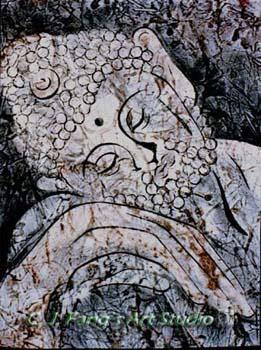
I believe that everyone is capable of learning how to express oneself artistically. However, it is my job to help each individual, through artmaking process, to master the expressive language of art. As everyone can learn to read and write, so can everyone learn to make art and enjoy the process of making art, as well as making oneself. It is throguh this process that students and I can come together to explore the wonderland of imagination. Although some people are luckily born with artistic talents while some people are not, talents are not the only thing makes a person an artist. Having no talents cannot take away everyone's opportunity to enjoy oneself to make art. Artmaking process is both intelligent and creative. Creativity is a living seed in the soul that can be nurtured by art.
In the process of exercising imagination and searching for ideas and identity, I facilitate students' self-discover of who they are, what they want, and what they can do. While understanding themselves and the world surrounding them, students simultaneously acquire knowledge and techniques of drawing, painting, designing, and problem-solving.
All good art teaching begins with creating an open, honest, and energetic atmosphere. I begin with teaching students how to see, allowing them to experience immediate exercises in observation and drawing the first day. Drawing—visual thinking on paper—is essential to all other art making as well as valuable in its own right. Through drawing—gesture, contour, detailed modeling and more—students experience a wide variety of approaches to making significant marks on paper. Once thinking on paper is accomplished through drawing mastery, exploration of painting begins. Pastel, watercolor, acrylic, oil, and mixed media are means to learning about mixing and use of color, composition, and specific media traits. When students are taught the basic elements and principles of design and composition, the language of art-making becomes their's. Experimentation with materials and a variety of media continues the growth process. References to famous and contemporary artists, to art history and its influences, enable students to place their work and the work of others in the long continuous heritage of art production and its impact on culture. Critique of student work by peers and teacher through group discussion, instructs students in how to articulate and express oneself about the art process and how to analyze what one observes in a work—not only in evaluating one's own work but the work of others. Individual attention from an art teacher who is also a professional artist significantly aids students' development.
 Copyright © 2006
Copyright © 2006